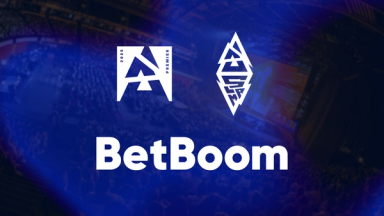Dota 2 Bloodseeker Guide - Itemisation, Abilties and Tips


Bloodseeker was once one of the forgotten Dota 2 heroes. However, in recent weeks, this hero has been steadily making his way back to the meta.
Currently, he is one of the top-tier safelane picks despite the meta not being in his favour. Nevertheless, he is a top pick because he counters many of the current meta-heroes.
Now with the new patch potentially on the horizon, this hero could become one of the strongest meta-heroes in the new patch.
Thus, in this article, we will discuss the best play style and itemisation to play Bloodseeker. We'll also be providing ways to counter the hero.
The thing to know about Bloodseeker
Before diving into the best methods to play Bloodseeker, let’s clear up a common misconception: Bloodseeker (BS) is primarily a safelane carry.
While he has occasionally been played in other roles, such experiments often backfire due to his reliance on farming and his unique skill set.
Despite being classified as a safelaner, Bloodseeker is a risky pick for the role.
The hero is not a good laner at all. After the laning stage, he struggles to flash farm without specific items to boost his farming efficiency.
 One of the highest win rate heroes in pro level pubs right now.
One of the highest win rate heroes in pro level pubs right now.His performance can be highly volatile—if he falls behind early, he struggles to recover, often leaving his team at a significant disadvantage.
As a carry, Bloodseeker’s toolkit is unconventional. He lacks reliable lockdown and doesn’t have the burst potential to quickly eliminate heroes.
His ultimate, Rupture, while powerful, is easily countered by a simple teleport back to base, which significantly reduces its impact in certain scenarios.
Due to these limitations, Bloodseeker is best picked as a situational counter to address specific heroes, rather than as a versatile or standard safelane carry.
Understanding Bloodseeker's Abilities
Bloodseeker has long been recognised as a fearsome lane bully in Dota 2. In the past, he dominated the laning stage with ease, leveraging his strong abilities to snowball into a powerful mid-game presence.
However, this is no longer the case. Bloodseeker's early game has become more vulnerable, making it easier for his opponents to punish him in the laning phase.
Despite this, he remains a potent hero in the mid to late game, offering significant utility and damage.
Bloodrage is Bloodseeker's first ability, granting both attack speed and spell amplification. During the laning phase, it can help secure last hits while also amplifying the magical damage output of allies as the game progresses.
 Double Down when you see this guy on your team.
Double Down when you see this guy on your team.This versatility makes Bloodrage particularly effective in synergising with heroes who deal high magical damage in the late game.
It also makes him a highly reliable pick as a safelaner in the current meta, where matches frequently extend beyond the 30-minute mark.
Blood Rite is an area-of-effect (AOE) ability that silences and damages enemies caught in its radius after a short delay.
This makes it a powerful tool for controlling opponents, especially those without sufficient movement speed to escape.
Proper timing and positioning of Blood Rite are crucial, as a well-placed cast can turn the tide of a skirmish.
Thirst is a passive ability that provides Bloodseeker and his team with the vision of low-health enemies. Additionally, it grants him bonus movement speed that scales with the number of opponents that are low on health.
Furthermore, it allows Bloodseeker to chase down fleeing enemies with ease, giving him a natural edge in skirmishes.
When this ability is combined with his innate ability, Sanguivore, BS will also heal for a certain amount when he kills a unit.
A safelaner who is tanky, capable of dealing significant damage, and able to provide vision during crucial late-game skirmishes is an invaluable asset to any team.
Bloodseeker’s ultimate ability, Rupture, deals an initial burst of damage and punishes opponents for moving. If a Ruptured enemy moves, they take significant damage proportional to the distance travelled.
The most effective counter to Rupture is to immediately teleport away, as the ability does not prevent TPs.
He can silence opponents who aren’t quick enough to react, and he can both immobilise and silence enemies who have no means of escape during skirmishes.
This utility, combined with his damage output, makes him a dangerous threat in the right hands.
Why Bloodseeker is Strong in Dota 2
In the current meta, the most popular safelane heroes are those with significant mid-game power spikes. Dragon Knight, Alchemist, and Spectre are frequently picked for this role.
Although Bloodseeker’s power spike doesn’t align with theirs, his versatile toolkit enables him to counter them effectively in skirmishes.
 Though DK is strong, he is still prone to Magic Damage.
Though DK is strong, he is still prone to Magic Damage.At level 15, Bloodseeker gains a talent that adds 150 bonus damage to Blood Rite, allowing it to deal around 600 damage while silencing enemies.
Bloodseeker’s itemisation in the current meta enables him to counter high-HP, tanky heroes effectively.
The Itemisation
Bloodseeker’s itemisation has changed. In this meta, it prioritises hybrid damage over physical damage.
For starting items, it’s wise to begin with basic components like Circlet, Quelling Blade, and some Ironwood Branches.
Circlet can then be upgraded into a Null Talisman or Wraith Band, depending on the match, while Ironwood Branches can be upgraded into a Magic Wand.
Rushing boots is also a viable option, with Bloodseeker having two choices: Phase Boots or Power Treads.
 Starting items for Bloodseeker
Starting items for BloodseekerPhase Boots provide increased durability and damage, while Power Treads offer greater overall stats, including attack speed and flexibility.
Bloodseeker’s first major item can be either Radiance or Maelstrom, both situationally strong choices.
While Radiance takes time to farm, it becomes a solid option as the game progresses. In matches where an early impact is required, players often opt for Maelstrom, upgrading it into Mjollnir.
These items enhance Bloodseeker’s farming efficiency, enabling him to quickly acquire his second core item, Aghanim’s Scepter.
The ability Aghs gives, allows Bloodseeker to deal damage based on his opponent’s health. The higher their HP, the greater the damage inflicted.
After obtaining Aghanim’s Scepter, Eternal Shroud is an excellent next item, as it boosts Bloodseeker’s magic resistance. Sange and Yasha are typically purchased after Eternal Shroud.
With these items combined, Bloodseeker reaches a crucial power spike, allowing him to take on opponents directly.
 Bloodseeker itemisation in pro level pubs.
Bloodseeker itemisation in pro level pubs.Satanic or a Black King Bar are both good items to purchase after getting these crucial items on BS. The decision on which to prioritise first usually depends on the state of the match.
To round out his itemisation, Refresher Orb is an exceptional late-game pickup for Bloodseeker. At level 25, he gains an additional Rupture charge from his talent tree.
With Refresher Orb, Bloodseeker can have up to four Rupture charges available during late-game skirmishes.
This allows him to reliably lock down four opponents in a single fight, making him an invaluable asset for his team during crucial engagements.
Bloodseeker Counters
Even though Bloodseeker is an overpowered hero right now, some of the meta heroes can still counter him.
 One of the best Bloodseeker counters.
One of the best Bloodseeker counters.Morphling is one such counter. He can come online earlier than Bloodseeker and his abilities allow him to tank Rupture with ease, making him a strong choice in skirmishes.
While Wraith King isn’t a meta-hero at the moment, he is another effective counter to Bloodseeker.
With his Reincarnation ability granting him two lives, Wraith King doesn’t have to worry as much about being Ruptured in fights, as he can simply respawn and continue engaging.
In addition to hero counters, itemisation plays a critical role in countering Bloodseeker. Items like Silver Edge and Nullifier are excellent choices against him.
As a safelaner, Bloodseeker has a 54% win rate in 3644 matches.





 Tundra Esports
Tundra Esports
 MOUZ
MOUZ
 Team Yandex
Team Yandex




